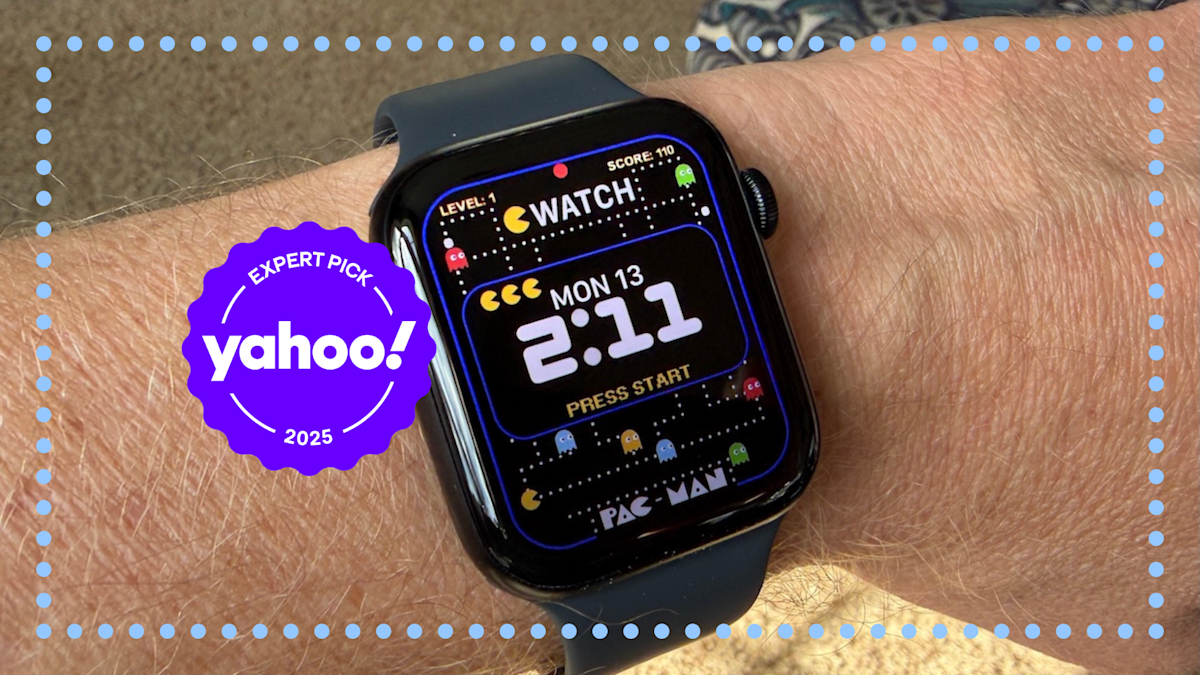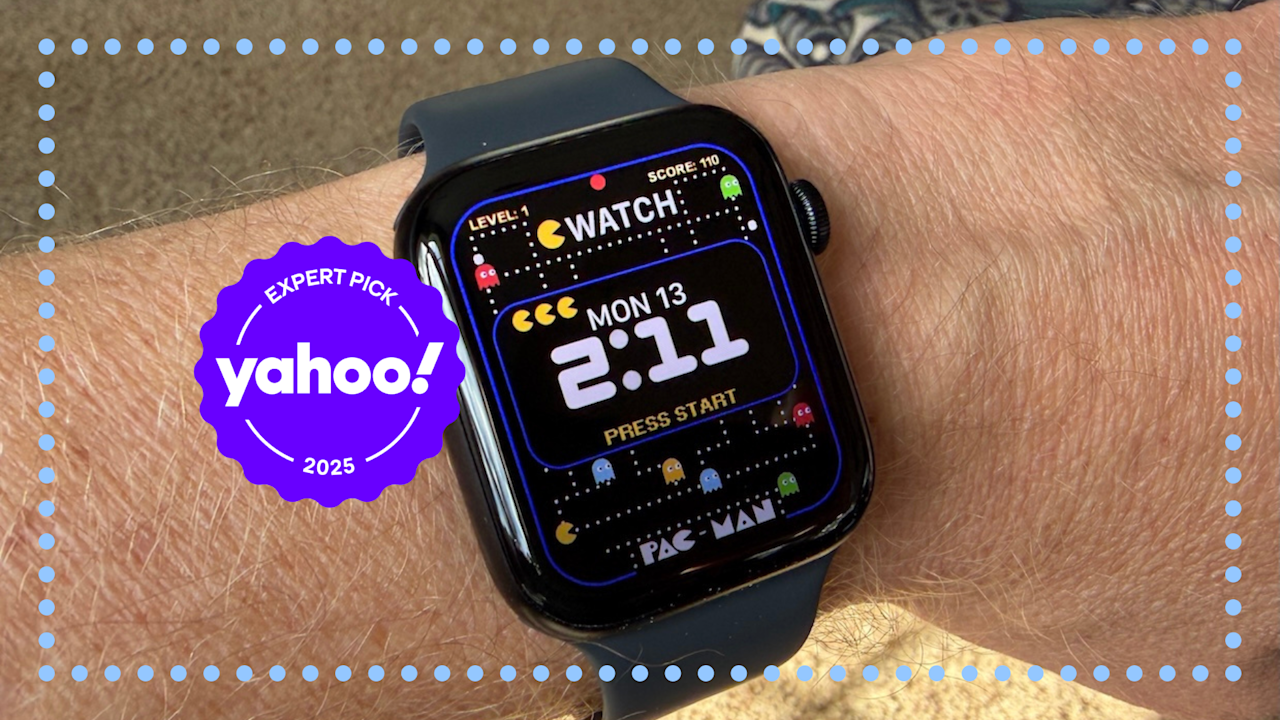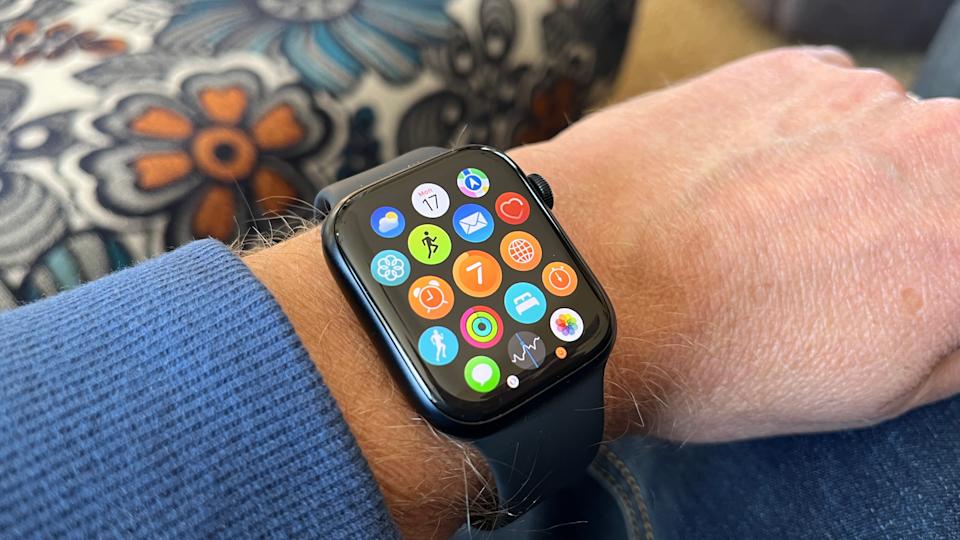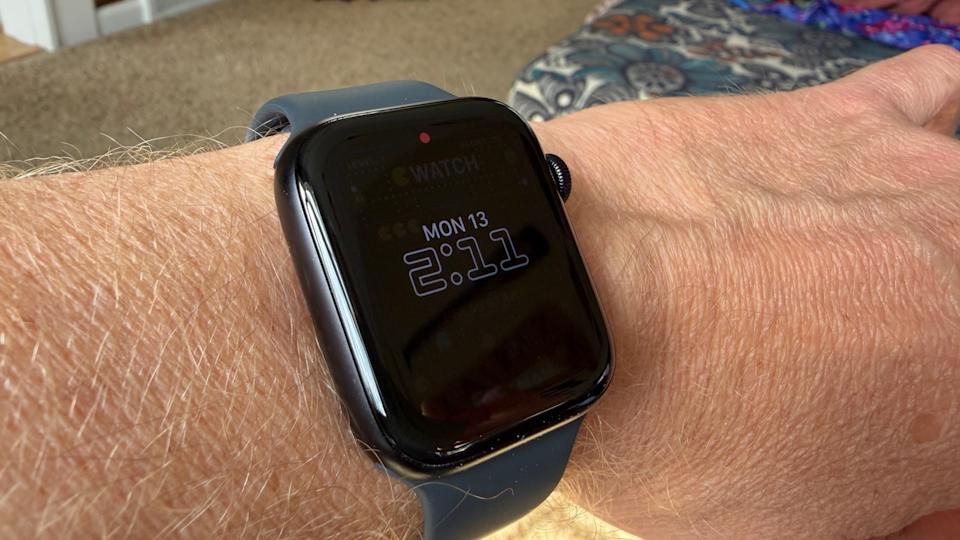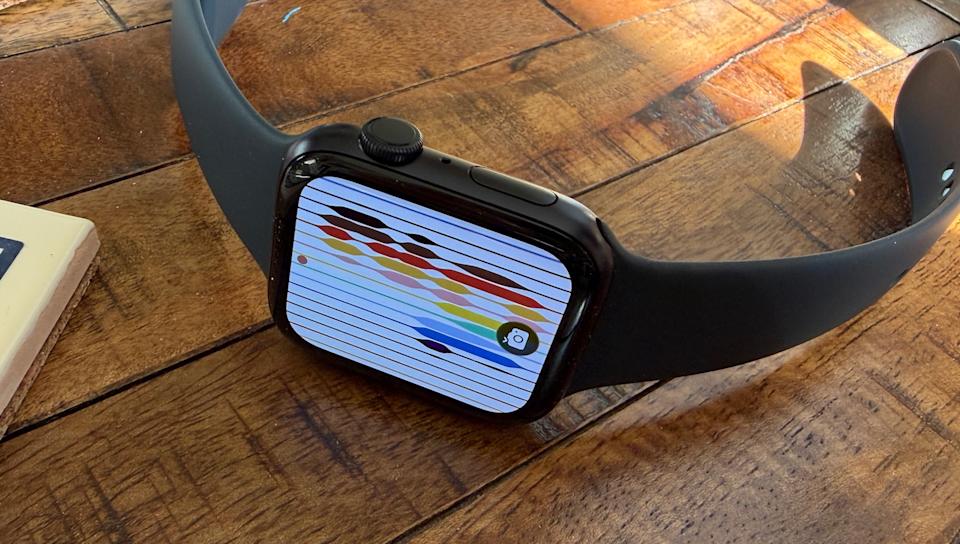Psst! Don’t tell Apple, but entry-level products are supposed to be limited. Less-than. Inferior to their pricier Pro counterparts. Yet we have the iPad (A16), iPhone 17 and now Apple Watch SE 3, all affordable base models in their respective lineups, all ridiculously capable and undeniably good choices for most users. Scratch that: great choices.
Let’s talk Watch SE 3, which still starts at $249 despite incorporating a multitude of improvements over the SE 2. In fact, it rivals the new Apple Watch Series 11 in many ways: same Apple S10 chip, an always-on screen, most of the same health features. But are you giving up anything truly important? And for someone looking to upgrade or buy their first smartwatch, is this the best pick? Here’s my Apple Watch SE 3 review.
Rick Broida/Yahoo
VERDICT: This is the best smartwatch for most iPhone users, full stop. And the fact that it’s Apple’s most affordable model is icing on the cake.
ProsTons of upgraded features, same $249 starting priceSame chip as the Series 11The cellular model works with 5G networksSupports gesturesAlways-on displayConsOnly two color optionsSlow to detect walksNot compatible with Android phones$240 at AmazonHow much does the Apple Watch SE 3 cost?
As noted above, the baseline Watch SE 3 starts at $249. That’s for the 40mm display; an extra $30 buys you the 44mm model. Obviously a measly 4mm isn’t much, but if you can swing the extra cash, you’ll never regret choosing the larger screen. (That’s especially true for those of us with aging eyes.)
Do you need cellular?
Next decision: GPS-only or GPS+Cellular. The latter, which adds $50 to the price of any Watch model, gives you the option of adding cell service, effectively turning the SE into a standalone phone. You could then make or take calls, send or receive text messages and so on, even when your iPhone is nowhere nearby. The GPS-only SE can do those things as well, but only when it’s in Bluetooth range of your phone or connected to a Wi-Fi network.
To me the cellular option falls under “nice to have,” as I’m rarely separated from my phone. I’d almost never use it, yet I’d be paying an extra monthly charge to my phone carrier. (A watch plan typically runs $10-15 per month.) On the other hand, if you’re a hiker, runner, paddleboarder or the like and don’t want to have to carry your phone on these excursions, definitely consider the GPS+Cellular model. And I’m happy to report the SE 3 supports 5G networks; the SE 2 was limited to 4G. That means it should work in more places than its predecessor.
Watch SE 3 color options
On the flipside, the SE 2 was available in three colors; the SE 3 limits you to just Midnight Aluminum or Starlight Aluminum. That’s disappointing, but you can jazz up any Apple Watch by swapping out wristbands. (I’m partial to magnetic bands like these, which are a breeze to put on and take off and look snazzy to boot.)
How hard is it to set up and use the Apple Watch SE 3?
Setup couldn’t be much easier, especially if you’re upgrading from an earlier model. As with AirPods, you just bring the watch close to your iPhone, then follow the onscreen prompts that appear. I did have to wait for a software update to download and install, which took well over half an hour, but otherwise it was smooth sailing.
The watch charges via an included magnetic dock; Apple estimates just 45 minutes to go from zero to 80%, a significant improvement over the SE 2.
As on Apple Watch models, the SE 3’s default app view is a disorganized mess. Good luck deciphering all the icons. (Example: Which of the two running-man icons do I want?) (Rick Broida/Yahoo)
Same old interface
As for the interface, well, not much has changed — and I continue to have mixed feelings about it. It’s not that an Apple Watch is hard to use, but rather that there’s a lot to remember. For example, there’s the Crown, which rotates to control things like brightness and volume but is also a button. There’s the button below the crown; it brings up a menu with a lot of icons, some of which are pretty cryptic. (Curiously, there are no text labels unless you go into the edit menu to decide which icons should actually be displayed on this menu.)
Speaking of cryptic, the default app view arranges tiny icons in a weirdly random grid; I’ve always had trouble finding the one I’m looking for and remembering which icon is for which app. (Many look alike, especially as third-party apps get added.) Thankfully, you can switch to an alphabetical list view that I find much easier.
I suspect new users may also struggle with basic navigation of the interface, like when to swipe down versus up (one brings you to notifications, the other to a “smart stack” of “live activities,” a.k.a. widgets). And when you’re tracking, say, a run, it’s not always evident how to navigate to other areas of the interface and then get back to the tracking screen. (The fact that Apple has frequently changed the interface and even what the buttons do over the past few years adds to the frustration.)
The iPhone Watch app provides access to various settings, and like the iPhone’s own Settings app, the number of options here can feel overwhelming. Again, I won’t say difficult; there’s just a learning curve. Newcomers should definitely peruse the Apple Watch User Guide, which is conveniently accessible from within the Watch app.
What’s new (or improved) in the Apple Watch SE 3?
All Apple Watches make a great wearable extension of your iPhone; I love being able to read (and reply to) text messages right from my wrist, rather than having to pull out my phone. I love being able to find my phone with just a tap on the watch (think: reverse AirTag). And I love all the health-related stats, reminders and so on.
So what’s different in the Watch SE 3? Here’s a rundown of the changes I consider most important, and most likely to matter if you’re thinking about upgrading:
Always-on
While I’ve never minded having to raise my wrist to get the screen to light up, I know many users have wished for an always-on option: When idle, the screen retreats to a dimmed, but still visible, mode so you can always see the time, date, etc. This is the first Watch SE model to include that.
The Watch SE 3 has an always-on option, meaning the screen will continue to show the date and time even when inactive. (Rick Broida/Yahoo)
Battery life
Although it’s still estimated at 18 hours, same as the SE 2, Apple claims you can get up to 32 hours of operation in low-power mode. (There was no such estimate offered for the SE 2.) And I already mentioned the significantly faster charging; if you want to wear the watch overnight for sleep-tracking, a mere eight minutes on the charger before bed is enough to buy you eight hours’ worth of operation.
Cellular
As noted above, if you choose a GPS+Cellular model, you’ll have the option of 5G service. While that’s typically more significant for data speeds, which aren’t really a factor on a smartwatch, it should also ensure the best possible call quality.
Durability
As someone who has managed to scratch just about every Apple Watch he’s ever owned, I’m glad to see Apple touting a 4X improvement in crack-resistance over the Watch SE 2. (Actually, I don’t know if that will help against scratches or not; time will tell.)
Gestures
Another first for the SE lineup: gestures. Now you can flick your wrist to immediately dismiss whatever’s onscreen and return to the watch face. There’s also double-tap: Tap your thumb and index finger twice to answer a call or reply to a text message. If the watch is idle, the double-tap brings up SmartStack (a scrolling list of widgets).
Built-in Siri
In previous Watch SE models, using Siri required your phone (or a Wi-Fi network) to be nearby. Now, you can perform all kinds of Siri-powered tasks — take a note, start a workout, show the current weather and so on — without an internet connection. That’s quite handy.
What’s not improved in the Apple Watch SE 3?
Remember that all those updates pile on top of an already-great predecessor. But there are a few areas that still have room for improvement — or, at least, haven’t improved in any meaningful ways.
Health features
Apple had already set the health bar pretty high with the SE 2: heart-rate monitoring (including AFIB detection), sleep tracking, even noise-monitoring to help protect your ears. And of course you can track just about every exercise known to man (including, most important to me, pickleball). The SE 3 adds a few minor amenities — nightly wrist-temperature tracking, sleep-apnea notifications, ovulation estimates — but that’s about it. If you want echocardiogram (ECG), blood-oxygen sensing or hypertension notifications, you’ll need something from the Watch Series, er, series. (All three of those features are available on the Series 10 and 11, while the first two actually date all the way back to the Series 4 and 6, respectively.)
Performance
Apple loves to tout faster chips in nearly all its new products, and the SE 3’s S10 processor certainly sounds better on paper than the SE 2’s S8. But nothing about the predecessor ever seemed slow. And what would? I’m not streaming videos on the thing or playing Roblox. True, the new chip allows for features like on-watch Siri and wrist gestures, but those have nothing to do with performance. Obviously it’s always good to have the latest and greatest brain in your electronics; just don’t expect the watch to be “faster” somehow. It’s really not.
Walk detection
One longstanding complaint I have with all Apple Watches: They’re inexplicably slow to auto-detect walks, either outdoors or on a treadmill. Usually I don’t get notified until at least 10 minutes in — and very often it’s at least 10 minutes after I’m done before it asks if I’m done. This can lead to skewed data on both ends of the activity. Why doesn’t Apple let me adjust walk-detection to kick in sooner?
The Watch SE 3 offers some lovely, stylish faces, but there’s still no marketplace so you can choose from thousands instead of just a couple dozen. (Rick Broida/Yahoo)
Watch-face selection
Apple still doesn’t have a marketplace for watch faces; you’re stuck with the company’s couple dozen offerings. They’re nice, but when I look at the dizzying array available for, say, Amazfit watches, I find myself wanting more and better choices. (Yes, you can use any photo as a customized background, but even that has some limits.)
Still iPhone-only
Just for the record, Android phone owners are still persona-non-grata when it comes to Apple Watch ownership. It needs an iPhone, and only an iPhone — though Apple does, thankfully, allow you to set it up for children in your family group who don’t have their own phone.
Should you buy the Apple Watch SE 3?
This is without question that best Apple Watch for most users, as it offers nearly everything you’d want from the product at a price that’s quite reasonable — even if you pay a little extra for the larger model, which is definitely my pick.
Should you consider the Apple Watch Series 11 instead? Beyond some cosmetic niceties — a bigger, brighter and more scratch-resistant screen and a thinner body with more color options — the aforementioned extra health features (ECG, blood-oxygen and hypertension monitoring) are the major feature step-ups. For day-to-day use, the big Series 11 improvement is better battery life: It can last about 24 hours on a charge, though to be honest I don’t see a huge advantage there if you dock your watch every night anyway.
Like I said at the start, it’s almost as though Apple made its entry-level watch too good. But that’s good news for you; whether you’re buying your first one or upgrading from an older model, this gets an enthusiastic thumbs-up recommendation from me.

